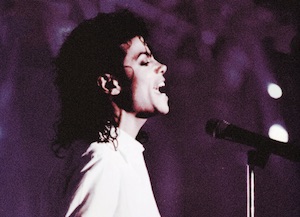Moving a chorus higher will solve many a boring song.
Looking for good songwriting content for your iPad, Kindle, laptop, desktop, or other PDF-reading device? Gary Ewer’s eBook Bundle, “The Essential Secrets of Songwriting”, will show you why good songs are good, and how to apply those lessons to your own music. Get the complete bundle of 10 eBooks. Read more..
____________
 When we talk about melodic range we’re talking about the number of notes between the lowest and highest notes. Some songs use a large range:
When we talk about melodic range we’re talking about the number of notes between the lowest and highest notes. Some songs use a large range:
- ballads
- story songs
- other melody-rich, slower songs.
Songs with a constricted range tend to be:
- faster
- more rhythmically energetic.
- songs with lyrics that express a strong opinion or attitude.
Why Choruses Are Usually Higher Than Verses
Even if you write songs guided mainly by your musical instincts, you’ll notice that your song choruses tend to be higher in pitch than your verse melodies. And if that’s not the case — in other words, if your verse and chorus tend to sit in the same basic range — you may find that your songs sound flat, lethargic, and uninteresting.
Comparing verse and chorus range is the first item on the list to check if you’re struggling to generate musical excitement with your songs. There doesn’t need to be a significant difference, but it generally needs to be there.
Creating a Climactic High Point
One of the benefits of using higher notes in a chorus is the impression of creating a climactic moment within your song. Take a look at the following line diagram of a typical song in verse-chorus format:
You’ll see that the verse sits lower in pitch, rises to meet the chorus, and then often descends slightly at the end. The highest notes often occur either at the start of the chorus, or (as in this diagram), nearer the end of the chorus melody. This plan describes a song like, for example, “Dirty Diana” (Michael Jackson)
That higher moment or two in the chorus creates what can be thought of as a climactic moment, a kind of musical “bull’s eye” that serves as a focus for the entire melodic design from verse to chorus. The listener feels energy increasing as the melody moves upward, and the highest note signals a kind of apex, down from which energy then dissipates, in time for the next verse.
Songwriters often look in the wrong direction when trying to solve the problem of boring songs. Sometimes the problem is with weak instrumentation (and weak playing), overly-repetitive melodic ideas or lyrics, or songs that don’t tap into any kind of universal message.
But more often than not, the biggest problems arise when melodies all sit in the same basic range, with no noticeable contour or design. Almost always, those kinds of problems can be solved by edging your chorus melody higher.
______________
Written by Gary Ewer. Follow on Twitter.
“The Essential Secrets of Songwriting” eBook Bundle packages look at songwriting from every angle, and have been used by thousands of songwriters. How to use chords, write melodies, and craft winning lyrics. GET TODAY’S BUNDLE DEAL












Pingback: “You’re Body is a Stone Temple Wonderland” – John Mayer, Stone Temple Pilots, and Embodied Cognition | "Two Songs A Day" – Dylan J
Pingback: Interesting Links For Musicians and Songwritiers – July 1, 2015 | Creative Music | Inspiring Musical Creativity